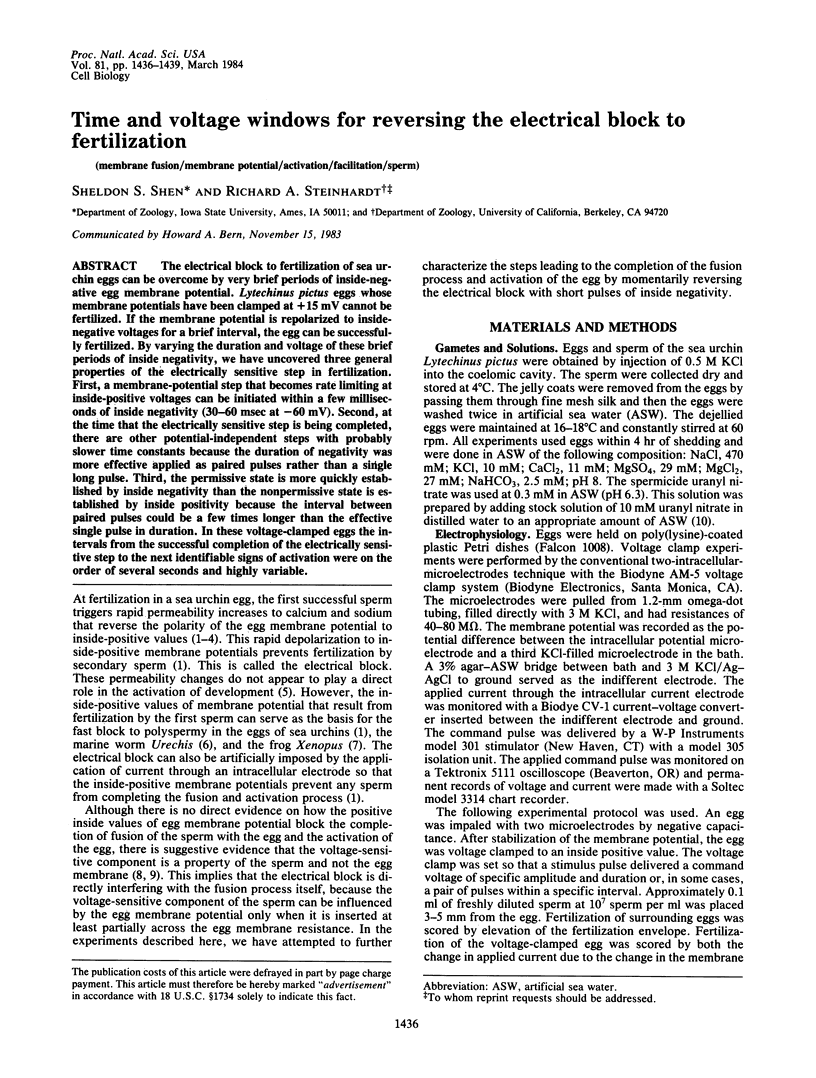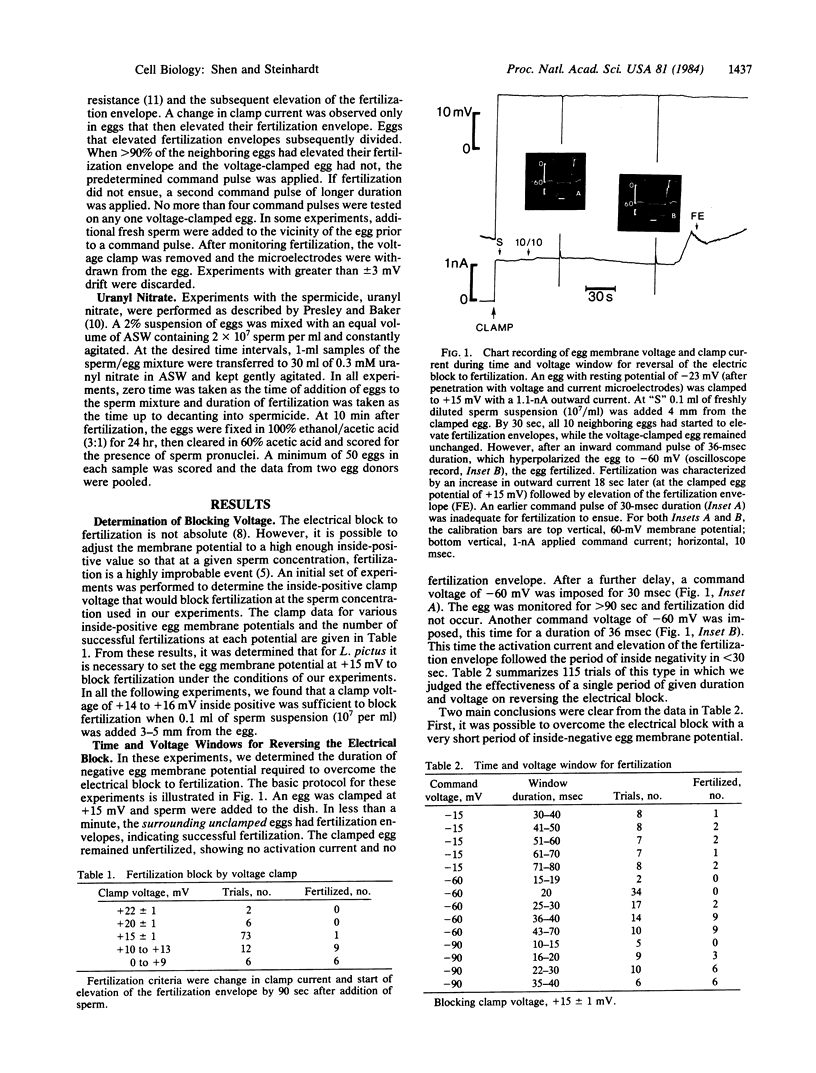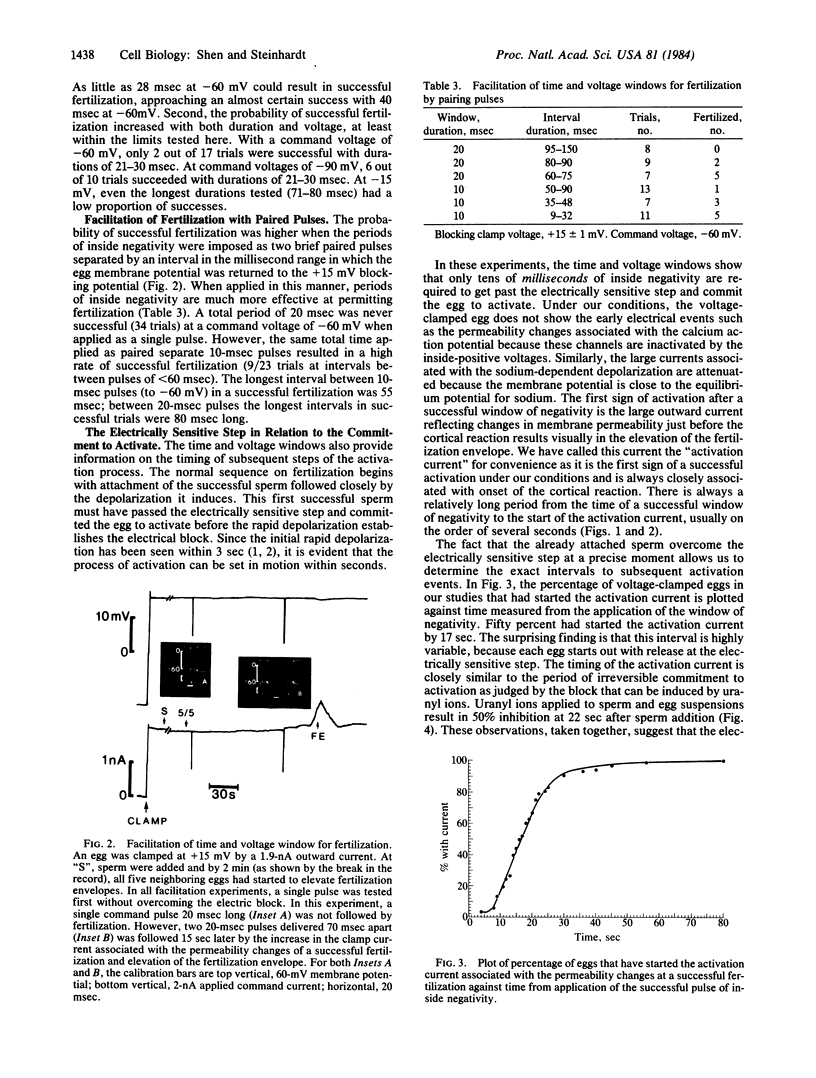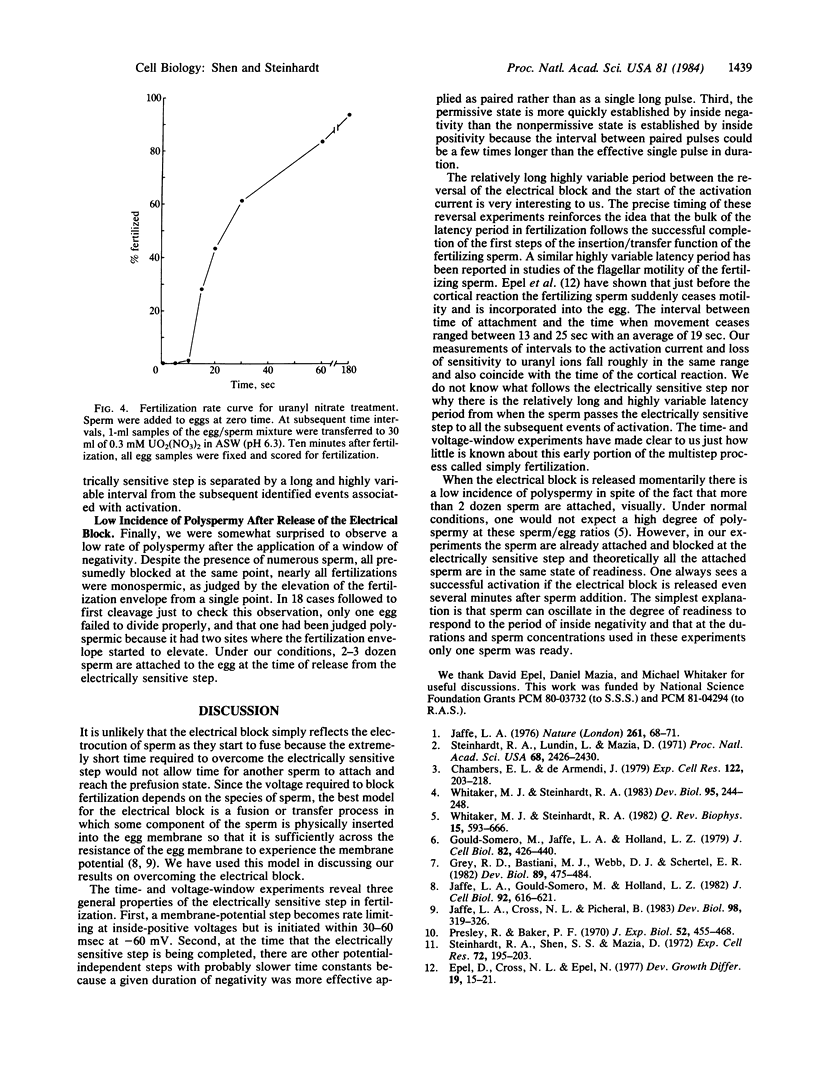Abstract
The electrical block to fertilization of sea urchin eggs can be overcome by very brief periods of inside-negative egg membrane potential. Lytechinus pictus eggs whose membrane potentials have been clamped at +15 mV cannot be fertilized. If the membrane potential is repolarized to inside-negative voltages for a brief interval, the egg can be successfully fertilized. By varying the duration and voltage of these brief periods of inside negativity, we have uncovered three general properties of the electrically sensitive step in fertilization. First, a membrane-potential step that becomes rate limiting at inside-positive voltages can be initiated within a few milliseconds of inside negativity (30-60 msec at -60 mV). Second, at the time that the electrically sensitive step is being completed, there are other potential-independent steps with probably slower time constants because the duration of negativity was more effective applied as paired pulses rather than a single long pulse. Third, the permissive state is more quickly established by inside negativity than the nonpermissive state is established by inside positivity because the interval between paired pulses could be a few times longer than the effective single pulse in duration. In these voltage-clamped eggs the intervals from the successful completion of the electrically sensitive step to the next identifiable signs of activation were on the order of several seconds and highly variable.
Full text
PDF



Selected References
These references are in PubMed. This may not be the complete list of references from this article.
- Chambers E. L., de Armendi J. Membrane potential, action potential and activation potential of eggs of the sea urchin, Lytechinus variegatus. Exp Cell Res. 1979 Aug;122(1):203–218. doi: 10.1016/0014-4827(79)90575-5. [DOI] [PubMed] [Google Scholar]
- Gould-Somero M., Jaffe L. A., Holland L. Z. Electrically mediated fast polyspermy block in eggs of the marine worm, Urechis caupo. J Cell Biol. 1979 Aug;82(2):426–440. doi: 10.1083/jcb.82.2.426. [DOI] [PMC free article] [PubMed] [Google Scholar]
- Grey R. D., Bastiani M. J., Webb D. J., Schertel E. R. An electrical block is required to prevent polyspermy in eggs fertilized by natural mating of Xenopus laevis. Dev Biol. 1982 Feb;89(2):475–484. doi: 10.1016/0012-1606(82)90335-9. [DOI] [PubMed] [Google Scholar]
- Jaffe L. A., Cross N. L., Picheral B. Studies of the voltage-dependent polyspermy block using cross-species fertilization of amphibians. Dev Biol. 1983 Aug;98(2):319–326. doi: 10.1016/0012-1606(83)90362-7. [DOI] [PubMed] [Google Scholar]
- Jaffe L. A. Fast block to polyspermy in sea urchin eggs is electrically mediated. Nature. 1976 May 6;261(5555):68–71. doi: 10.1038/261068a0. [DOI] [PubMed] [Google Scholar]
- Jaffe L. A., Gould-Somero M., Holland L. Z. Studies of the mechanism of the electrical polyspermy block using voltage clamp during cross-species fertilization. J Cell Biol. 1982 Mar;92(3):616–621. doi: 10.1083/jcb.92.3.616. [DOI] [PMC free article] [PubMed] [Google Scholar]
- Steinhardt R. A., Lundin L., Mazia D. Bioelectric responses of the echinoderm egg to fertilization. Proc Natl Acad Sci U S A. 1971 Oct;68(10):2426–2430. doi: 10.1073/pnas.68.10.2426. [DOI] [PMC free article] [PubMed] [Google Scholar]
- Steinhardt R. A., Shen S., Mazia D. Membrane potential, membrane resistance and an energy requirement for the development of potassium conductance in the fertilization reaction of echinoderm eggs. Exp Cell Res. 1972 May;72(1):195–203. doi: 10.1016/0014-4827(72)90581-2. [DOI] [PubMed] [Google Scholar]
- Whitaker M. J., Steinhardt R. A. Evidence in support of the hypothesis of an electrically mediated fast block to polyspermy in sea urchin eggs. Dev Biol. 1983 Jan;95(1):244–248. doi: 10.1016/0012-1606(83)90024-6. [DOI] [PubMed] [Google Scholar]
- Whitaker M. J., Steinhardt R. A. Ionic regulation of egg activation. Q Rev Biophys. 1982 Nov;15(4):593–666. doi: 10.1017/s0033583500003760. [DOI] [PubMed] [Google Scholar]


